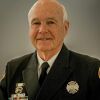Fountain Square, in the heart of downtown Cincinnati, much like Washington Square in New York City, is a meeting place surrounded by hotels, shops, restaurants and stores that also serves as a venue for events throughout the year. These include summer concerts, autumn football on a giant screen television and a winter ice skating rink. The capstone of the square is the Tyler-Davidson Fountain, “Genius of Water,” a landmark in Cincinnati since 1871.
At the northeast corner of the square is the 30-story Fifth Third Center Building, the home office of the Fifth Third Bank that does business in 10 states. Within two blocks of the Center are the home offices for three Fortune 100 companies. Shortly after 9 a.m. on Sept. 6, 2018, Omar Santa Perez entered the Fifth Third Center Building.
What happened? At 0907, the first 911 call was received reporting a shooter in the Fifth Third Center with multiple casualties. Immediately, several police officers were dispatched along with a Level 1 MCI complement from the Cincinnati Fire Department.
This MCI response consisted of five medic transport units; three paramedic engine companies; a heavy rescue; district chief and ALS supervisors. Crucial to the response was that the fire dispatch center also opened the Hamilton County Hospital Net, supervised by the University of Cincinnati Medical Center, a level 1 trauma center, to determine which hospitals in the area had surge capacity to handle multiple trauma victims.
By 0910, two patrol police officers and one off-duty officer working a nearby construction detail entered the lobby, confronted the shooter and, during an exchange of gunfire, neutralized the threat. Responding firefighter/paramedics wearing ballistic vests were immediately cleared to enter and to treat the victims, finding five people and the shooter down. Two of the victims and the shooter were already dead. Firefighter/paramedics and police officers searched the remainder of the first floor, finding the three additional victims who were in serious to critical condition.
The fire dispatch center declared the incident a Level 2 MCI, staging 11 additional medic transport units from several Hamilton County fire departments at a nearby central location. In addition, the Regional Operations Center for Cincinnati and Hamilton County was opened and placed into operations, while the University of Cincinnati Medical Center activated its own MCI protocol that stopped any elective surgery and opened additional operating rooms to handle a surge as needed.
Occupants of the Fifth Third Center were advised to shelter in place and told the immediate threat had passed. They were allowed to leave on a floor-by-floor basis beginning approximately 1130. As a precaution, SWAT supervised this evacuation.
Several hours later, it was announced that a total of four people, including the shooter, had died, while at this time, two additional victims remain at the UC Medical Center.
MCI Response Complement
At an 11:00 a.m. press conference, with Cincinnati Fire Chief Roy Winston and his staff present, Mayor John Cranley credited the coordinated police and fire operations for having saved countless lives among the hundreds of employees within the Fifth Third Center.
How did this incident response work so smoothly? First, both Cincinnati and Hamilton County fire departments had experienced other MCIs within the past year. Since that time, fire chiefs worked to build an MCI Response Complement from Level 1 to Level 5 that could be uniformly adopted. The adoption of that MCI Response has been so successful that it now includes several bordering counties in Ohio, Indiana and Kentucky as well as the Greater Cincinnati International Airport.
Fire response scenarios require ballistic vests
While a “hot wash” was held by the fire department later that day, the incident will be reviewed with the key participants to see if or where the MCI Response plan can be refined. An MCI Response must be dynamic, not something for any fire department to compile, then shove into a drawer. It must be constantly refined, updated and practiced to make it work in the event of a real MCI in your jurisdiction.
In a conversation with Chief Winston, I asked him for his most important take-away from this incident. He responded by saying that initially, there had been some push back when his department began to issue ballistic vests to his personnel in the past year. But he indicated how proud he was that in his estimate, over 95 percent of those who responded to the Fifth Third Center were in their vests as they exited their apparatus. He strongly believes in the need for ballistic vests given the possible scenarios that firefighters might face.
This incident response by Cincinnati and Hamilton County proves that MCI planning works, allowing responders to provide the best possible emergency services under one of the most difficult types of conditions we can encounter.
Stay safe!













